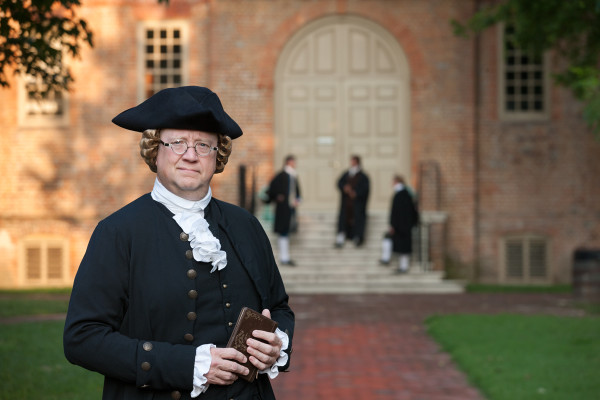 Are you ready for a behind-the-scenes glimpse at Colonial Williamsburg’s world-class design archives? We are going to take you inside the hallowed spaces where you can look but can’t touch (at least not without gloves!). So turn off your camera flash, leave your bags at the door, and join us for this rare and exclusive opportunity….
Are you ready for a behind-the-scenes glimpse at Colonial Williamsburg’s world-class design archives? We are going to take you inside the hallowed spaces where you can look but can’t touch (at least not without gloves!). So turn off your camera flash, leave your bags at the door, and join us for this rare and exclusive opportunity….
Mastering a Fife and Drum Standard
By Ben Swenson
How many 18th-century fife and drum tunes can you name? Go on, count them. Ten? Five? Two?
If you’re like most folks, you might struggle beyond “Yankee Doodle” to whistle popular Colonial music. Put yourself in early Americans’ shoes, though, and you would have been familiar with a much larger stable of standards.
The Sound of Battle
Want to know more about the music of the fifes and drums? Listen to this podcast about the physics of sound, including an experiment that allows you to hear for yourself how well the fife and drum punch through loud noise.
One such tune was “Road to Boston,” which Americans heard often during the Revolutionary War. Copped from a British tune called “Road to London, the Americanized version, which went by other names such as “March to Boston,” was a nod to all the Patriots who flocked to Boston to offer resistance to the British forces occupying the town. The tune is now the official ceremonial march of Massachusetts.
“Road to Boston” is also popular in the 21st century with recruits of the Colonial Williamsburg Fifes and Drums. “Road to Boston” is among the first tunes the blossoming musicians play as an ensemble because the level of skill required to play it matches that of most recruits. The fact that the march is so well documented in early manuscripts makes it a good choice for the Fifes and Drums’ commitment to historical and musical accuracy.
Let’s eavesdrop on recruits as they rehearse “Road to Boston.”
[brightcove videoID=4260162616001 playerID=3703125019001 height=315 width=560]
Fun Fact: Was George Wythe Murdered?
New Podcast: The Sound of War
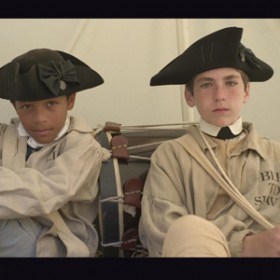 The conventional wisdom surrounding Colonial Williamsburg’s Fifes and Drums has been that these timeless instruments provided the backdrop to battle because their sounds were uniquely detectable to the human ear.
The conventional wisdom surrounding Colonial Williamsburg’s Fifes and Drums has been that these timeless instruments provided the backdrop to battle because their sounds were uniquely detectable to the human ear.
The piercing fife, the thundering drum: both could be heard over the din of battle, making them a crucial means of communication for commands like parley, cease fire, and retreat.
But is is true? We talk with William and Mary Physics Professor Keith Griffioen to learn about the physics of sound, then stage our own experiment to put what we’ve learned to the test.
Alexander Hamilton, Founding Rapper
By Paul Aron
What could be more improbable than a hip-hop musical about Alexander Hamilton—in which Thomas Jefferson, James Madison and George Washington are all played by African-Americans?
Maybe that it has garnered rave reviews and is bound for Broadway this summer. Written by and starring Lin-Manuel Miranda (who is himself Puerto Rican), “Hamilton” seems destined to be a hit.
But what does a historian make of the show? Kelly Brennan Arehart, who teaches history at the College of William and Mary, is not only a scholar but a Hamilton enthusiast.
“I started reading about him in high school,” she said. “Reading scholarly books on him inspired me to become an academic historian.”
Arehart says much of the show is accurate and true to the interpretation of Ron Chernow, whose biography of Hamilton inspired Miranda. But the show does have some biases.
“For example, from my perspective, they overplay Hamilton’s role in the American Revolution and make it sound like it would have been impossible to win without him,” Arehart says. “The show also makes Hamilton out to be the single most significant participant in the founding of the nation.”
This type of bias is common among biographers, Arehart adds. “We also saw it in David McCullough’s ‘John Adams.’ I don’t begrudge Chernow or the writers and producers of the show taking this approach – it makes for more dramatic storytelling. Besides, everyone is the hero of his or her own life story.”
The show features a rap battle between Hamilton and Jefferson. But, Arehart says, other founders’ stories don’t lend themselves as well to this kind of treatment.
“Hamilton, much like the musical, was so ahead of his time,” Arehart says. “He planned for the future — his own and the nation’s — with the same manic energy exhibited in the show. The show’s structure and approach captures Hamilton’s spirit as well as the content does. Hip-hop, an American creation, pairs well with Hamilton, the epitome of the American self-made man.”
Hamilton’s life, Arehart notes, looks like a soap opera compared to the other Founding Fathers. Orphaned at a young age, he came to America to build a better life. He accomplished this only to lose his life in a duel.
Says Arehart: “I always wondered why it took so long for writers and performers to take an interest in him. It may be, in part, that there wasn’t a suitable medium to tell his story until now.”
Arehart would love to see teachers incorporate the musical into their classrooms: “Not only does it place Hamilton in the spotlight he deserves, it makes history more engaging to students with little prior interest.”
Her only concern is the musical’s bias, but even that could be of use to teachers: “It would be important for teachers using ‘Hamilton’ to address that issue head on. Many teachers often spend a lot of time discussing bias in primary sources, but fewer encourage their students to examine bias in secondary sources—especially their textbooks.”
[WATU 3]
Weather and Farming: A Balancing Act
By Ben Swenson
The weather so far in 2015 has delivered one headache after another.
California is parched from years-long drought. In much of the South, the opposite is true, with some areas receiving five times their normal rainfall. And who can forget the scenes of New England’s record-breaking snowfall where some places saw totals of more than 100 inches?
[brightcove videoID=4268376116001 playerID=3703125019001 height=315 width=560]
It has likewise been an off year in Virginia’s Colonial capital, though much tamer in scale.
Still, said Historic Farming interpreter Wayne Randolph, the conditions affected the work at Great Hopes Plantation, Colonial Williamsburg’s re-created family farm. Extended periods of wet, cool weather disrupted the normal planting schedule.
“Everything went in late,” said Randolph. “Corn usually goes in sometime in early April. We planted it in late April and early May.”
Those few weeks of delay may seem like a big deal to many modern Americans accustomed to food, cash and climate-control on demand. But for their Colonial ancestors, whose livelihood grew just feet from their front door, a bout of bad weather meant much more than keeping the overcoat handy awhile longer. Families’ fortunes rose and fell with forces beyond their control. Two centuries later, guests to Colonial Williamsburg can get a sense of those difficulties at Great Hopes Plantation.
That surfeit of cold and wet weather this year has been worrisome for Historic Farming interpreters because a single issue: Late planting, often creates other problems that snowball and translate into crop failure. “When you put crops like tobacco in the ground late, it can cause the number of insects to increase,” said Randolph.
Sometimes the interpreters at Great Hopes Plantation have conversations with guests while plowing or harrowing, moving up and down long rows as they turn fresh earth. There’s a short window of time for specific tasks to get done and the farmers must take every opportunity to complete that work.
Disruptions to the planting schedule are only one of a host of recurring problems that plague this working farm. Weeds continually choke out crops. Deer, geese and groundhogs are among the critters that see these fields as effortless food. And that’s to say nothing of insects, fungi and diseases that can decimate plants while the folks who put copious amounts of labor into them look on, powerless to help.
All those troubles that visit Great Hopes Plantation, vexing as they may be, are a reflection of the frustrations of farmers-that is to say the vast majority of Americans-long ago.
“Am I always to be thus unlucky?” Landon Carter wrote in July 1757. Carter was a prominent Virginia planter and prolific diarist who wrote often about agriculture. “I can truely say that from 1749 to this year I have not had one tollerable seasonable year.”
Carter’s diary in places reads like a troubleshooting manual for the 18th-century yeoman:
On March 6, 1758: “Began this day to sow Oats. The weather till now has been so bad I could not put a seed in Sooner.”
On March 25, Carter reported seven cattle that had died from various causes, “In spite of all our care.”
On April 5, he once again vented his frustration with finicky weather: “This day a Frost and so has it been this 12 or 14 days…As a Farmer or Planter I must call it a bad Season.”
An insect pest-the tobacco fly-had infested his seed beds and laid waste to the young plants he was relying on to transplant to individual hills, about a foot high, where they would grow to size.
On April 27, Carter wrote he had “now scarcely a plant to be seen—such have the ravages of the Flye been.”
Carter calculated that on part of his land, his enslaved laborers had created 280,000 tobacco hills, one for each plant he wished to sow. But only 10,000 seedlings were available thanks to the tobacco fly. No matter, though, because the weather in 1758 was yet to reveal the depths of its madness.
By May 10, Carter had seen writing on the wall: “This is the third morning running I have to observe there was a white frost which added to the parching heat in the day and excessive dry weather must certainly destroy the Crops and fruit of every kind.”
Indeed, that year a drought decimated the tobacco crop. Some landed gentry like Carter were able to absorb those losses, though most middling farmers had no such financial cushion. Virginians in 1776 were indebted to British creditors by more than £1.3 million, over 46 percent of all Colonial debt to the mother country.
Agriculture has come a long a long way since the 18th century, effectively eliminating the grip that weather had on peoples’ day-to-day existence. That relationship was once more than just headlines. It was life.
Ed Schultz, Supervisor of Historic Farming, said that Great Hopes Plantation, and all the frustrations he encounters there, is a common history for every guest who stops by. “This was an agriculturally-based society in the 18th century. This was home. This was you. Even if you had ruffles on your shirt, looking out at someone else doing the work, this was your experience.”
What Is an American?
[brightcove videoID=4028140536001 playerID=2893748186001 height=315 width=560]
How should the United States welcome immigrants?
Should newcomers be free to come at will?
Will they be loyal to American institutions and values?
Should they speak English? Are diverse cultures a strength or a weakness?
The debate over paths to citizenship is in the news today, but it was also a question that the United States wrestled with as a new nation.
In this imagined conversation, Thomas Jefferson, the first secretary of state, considers immigration policy with George Washington, the first president.
The United States passed the first naturalization in law in 1790. It required that an alien applying for citizenship:
• be a “free white person”
• have lived in the U.S. for two years, and one year in their place of application
• prove that they are “a person of good character”
• take an oath of allegiance to the Constitution
Being American is not about identifying with a particular race, creed or color. It’s about buying into the idea of America, the freedoms and values that we cherish.
What’s the best way to guarantee that newcomers understand and share those ideals?
Introducing Our July 4 Summer Grilling Series: Chefs on Deck!
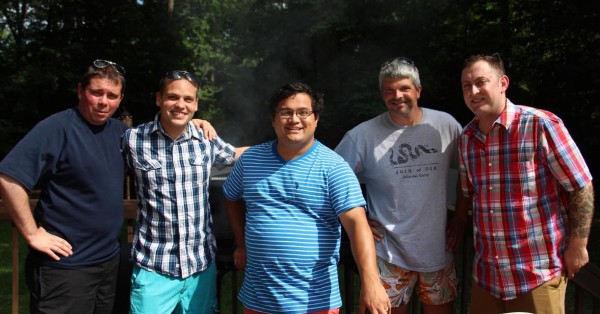 Recognize these guys? Maybe not. If you’re like us, you’re probably used to seeing them in their crisp, white chefs uniforms and hats—serving up delicious meals at the Williamsburg Lodge and Huzzah! BBQ Grille. But we wanted to keep these super casual! Plus, who wants to stand in front of a hot grill wearing so many layers?…
Recognize these guys? Maybe not. If you’re like us, you’re probably used to seeing them in their crisp, white chefs uniforms and hats—serving up delicious meals at the Williamsburg Lodge and Huzzah! BBQ Grille. But we wanted to keep these super casual! Plus, who wants to stand in front of a hot grill wearing so many layers?…
Archaeology Guest Blog: Dishing the Dirt On Our Newest Kid-Friendly Dig Site!
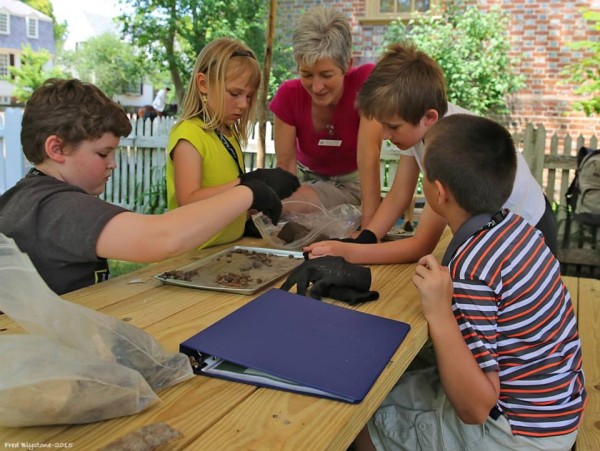 Popular culture has a way of romanticizing archaeology. Just think about it. In the movies—misty, remote, and exotic sites are explored by archaeologists who are rugged, yet inexplicably well-manicured. They extract glittering artifacts from the ground in adrenaline-fueled moments. It’s exciting stuff! …
Popular culture has a way of romanticizing archaeology. Just think about it. In the movies—misty, remote, and exotic sites are explored by archaeologists who are rugged, yet inexplicably well-manicured. They extract glittering artifacts from the ground in adrenaline-fueled moments. It’s exciting stuff! …
Learn More About the Healing Powers of Herbs in Our Colonial Garden!
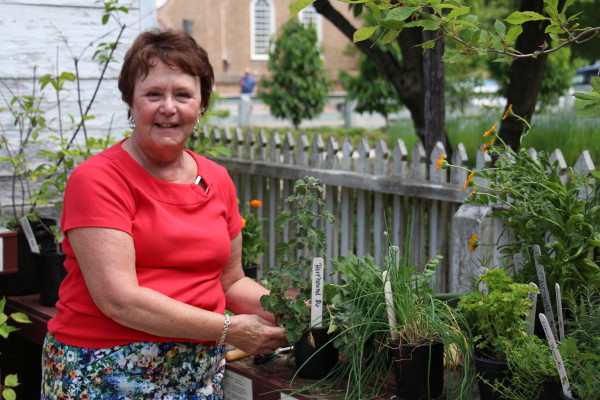 If you’re planning a visit this summer, you may want to add a new program to your itinerary. It’s a one-hour session inside the Colonial Nursery and Garden where you’ll learn about everything from which plants act as bug repellants to which can help those bug bites once you get them!
If you’re planning a visit this summer, you may want to add a new program to your itinerary. It’s a one-hour session inside the Colonial Nursery and Garden where you’ll learn about everything from which plants act as bug repellants to which can help those bug bites once you get them!
…
- «Previous Page
- 1
- …
- 8
- 9
- 10
- 11
- 12
- …
- 175
- Next Page»
